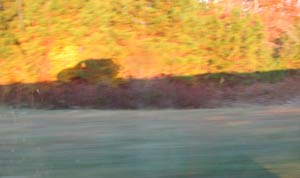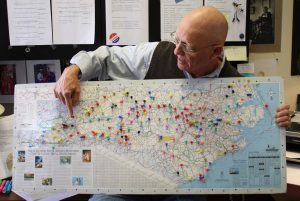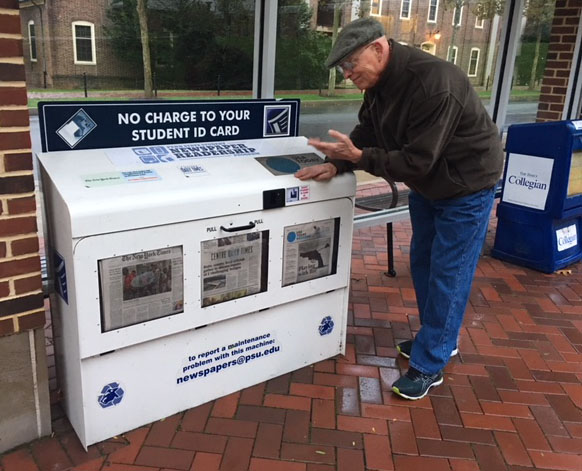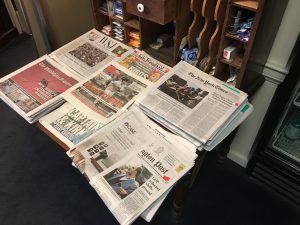
Dear Reader, permit me a brief introduction,
I am not a travel writer.
But I am a writer.
And I am traveling.
Since a writer is compelled by internal hard wiring to record what he or she sees and experiences, there is no option but to (in the words of singer-songwriter Greg Brown, “…wander about some ancient city…scribble in my notebook…pretty little poems, pretty little poems…”
I’ve been scribblin’ in my notebooks now for 18 years in this Blue Highways Journal in an attempt to put down on paper, film and pixels a life “on the road” — an obvious homage to my hero Charles Kuralt, the UNC alum and CBS legend, who, in 1985 told a commencement audience that the future of the media relied upon the press becoming “relentlessly local.” Words thrown ad-lib into a speech that changed my life.
Like my mentor Kuralt, as a journalist I’ve been afforded the opportunity and the privilege of traveling the backroads with pen and camera, not just in my home state of North Carolina, but also country lanes around this world.

Many readers will recognize the origin of this journal’s title: William Least Heat Moon’s classic book “Blue Highways,” a clarion call for fast-tracking Americans to exit off the mind-numbing, soul-eating interstates and take “the road less traveled” — the simple two-lane roads often designated with the color blue on old school, ink-on-paper maps.
There are blue highways all over this blue planet of ours, and this particular journey takes the back roads through the rolling Appalachians and long valleys of central Pennsylvania to my old stomping grounds of State College, Pa., home to Penn State, where I taught for 10 years before coming home to UNC-Chapel Hill in 2001.
A Disclaimer
I am not a Luddite.
In fact, I offer as proof: I was into digital photo (1994) before digital was cool. In the long-ago mid-‘90s, I helped oversee the creation of Penn State’s first “New Media Lab.” And way back in ’96, my students created their own online campus newspaper. Fast forward 22 years, I created and oversee to this day the digital community news site www.durhamvoice.org.
That being said, I am unabashedly a die-hard fan of ink-on-paper newspapers and a tireless champion of the hold-and-fold community press. To me, this appreciation for both digital and print shouldn’t be a contradiction.
As author and media observer David Sax writes in the 2016 best-seller, “The Revenge of Analog,” print commands an authenticity, credibility and a veracity that digital screens can only mimic. There remains something so basic and satisfying about the “direct contact,” as Sax describes the tactile physical experience the reader has with a printed “real object.” Indeed, the subtitle of his book is: “The Importance of Real Things and Why They Matter.”

Happy Readers in Happy Valley
As a lifelong community journalist, a former editor-publisher and an unapologetic lover of newspapers — and especially so-called “small” newspapers — I am endlessly fascinated with how people respond to media.
Whether shopping in Carrboro-Chapel Hill, traveling up to Penn State for a conference, or heading off to Tuscany for a fall getaway, I look at human behavior relative to media consumption. In short: is there a community paper in this town? And if so, how are people relating to it?
Community planners will tell you that in order to thrive, a community needs basic institutions: schools, churches, a library, law enforcement, good places to gather socially (usually associated with food and drink), recreational facilities and cultural offerings.
To that list I would add a hometown newspaper.
I have this theory that a community without a paper is not a bad place—but it’s just not as robust and empowered and informed as a town with a paper.
State College, Pa., is such a media-rich community. And I have to place it in contrast to my own hometowns of Carrboro-Chapel Hill, which, in the words of media scholar Penny Abernathy of UNC-CH, are “urban news deserts.” Once proud and excellent community papers, the Chapel Hill Weekly, the Chapel Hill News and the Carrboro Citizen, are no longer with us. (Caveat: thank goodness for the Daily Tar Heel!)
Since I’m in Happy Valley for a weekend conference, I can’t help but notice how folks here gobble up the papers. Yes, plural. There are at least three (count ‘em…THREE) community/local papers in this little burg, located in the dead center of the state some folks call “Pennsyltuckey” for its rurality.

Exhibit A: at the Nittany Lion Inn, this university’s counterpart to the Carolina Inn of Chapel Hill, the gift shop sells seven different newspapers, plus two local freebies, which makes nine print choices. Copy that, Carolina Inn!
Exhibit B: On campus, students using their ID cards can access free copies of USAToday, the New York Times and the local Centre Daily Times. Why is this important? My own son Rob, when he was a student here back in the late ‘90s, became a staunch NYT reader because of the Penn State newspaper reader program on campus.
Publishers take note: the way to create readers is to give them something attractive to read, easy to find and full of compelling content. I am so sick of newspapers competing to win what some media pundits have called “the race to the bottom.”
So, it’s heartening to be in a community that values and promotes high quality journalism – both nationally and especially locally, and has taken pro-active measures to grow readers. Repeat: to grow readers. And, I dare say, grow reporters too.
Thanks, State College, I needed that.
Now, on to Tuscany, where we’ll be observing how the people of Montepulciano, my favorite Italian “ancient city,” get their local news. Ciao!

